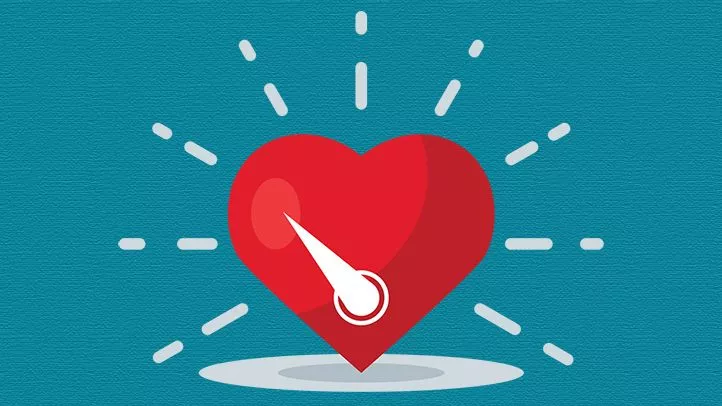Hypotension is generally considered to be less than 90 mm Hg high (systolic) or less than 60 mm Hg (diastolic).
What is considered low blood pressure for one person may not be a problem for another. Low blood pressure may be asymptomatic or cause dizziness or fainting. Low blood pressure at times can be hazardous.
Causes of low blood pressure range from dehydration to serious illness. It is important to find out the cause of low blood pressure so that it can be treated if necessary.
TYPES OF HYPOTENSION
- Multiple system atrophy with orthostatic hypotension: Also known as Shy-Drager syndrome, this rare condition affects the nervous system that controls involuntary functions such as blood pressure, heart rate, breathing, and digestion. It is associated with very high blood pressure when lying down.
- Neurally mediated hypotension: Standing for long periods of time lowers blood pressure. This type of hypotension primarily affects young adults and children. It may be due to miscommunication between the heart and brain.
- Postprandial hypotension: The drop in blood pressure occurs after a meal. Older adults with high blood pressure or autonomic nervous system diseases are most likely to be affected by it. It’s possible to reduce symptoms by eating small, low-carbohydrate meals, drinking more water, and avoiding alcohol.
- Orthostatic hypotension (postural hypotension): A sudden drop in blood pressure when standing up from a seated position or lying down. Causes encompass dehydration, extended bed rest, pregnancy, sure clinical conditions, and a few medications. This type of hypotension is common in older people.
SYMPTOMS OF HYPOTENSION
- Nausea
- Trouble concentrating
- Fatigue
- Fainting
- Dizziness or lightheadedness
- Blurred or fading vision
Severe Hypotension can result in a dangerous condition called shock. Symptoms of shock are as follows.
- Weak and rapid pulse
- Rapid, shallow breathing
- Decrease in skin coloration
- Cold, clammy skin
- Confusion, especially in older people
HYPOTENSION DIAGNOSIS:
To diagnose Hypotension (low blood pressure), doctors do a physical examination and question your medical history. The tests include measuring blood pressure. Different tests are done to determine Hypotension:
- Tilt table test.
- Electrocardiogram (ECG or EKG).
- Blood tests.
HYPOTENSION TREATMENT:
Low blood pressure with mild or no symptoms hardly requires treatment. If Hypotension is causing any symptoms, treatment depends on the cause. For example, if a drug is causing low blood pressure, your doctor may recommend changing or stopping the drug, or reducing the dose. Do not change or stop taking any medicine without first consulting your doctor.
If the cause of Hypotension is unclear or there is no treatment, the goal is to raise blood pressure to relieving symptoms. There are several methods, depending on age, medical condition, and type of hypotension:
- Drink lots of water: Water increases blood volume and prevents dehydration. Both of these are important in treating hypotension.
- Increase Salt Intake: Experts usually recommend limiting salt (sodium). But for people with Hypotension, it may be a good thing. However, excessive sodium can lead to heart failure, especially in senior citizens. Hence, it is important to check with your doctor before increasing your salt intake.
- Medications: Several drugs are available to treat Hypotension which occurs when people stand (orthostatic hypotension). For example, the drug fludrocortisone increases blood volume. It is commonly used to treat orthostatic hypotension. If you have long-term (chronic) orthostatic hypotension, midodrine (Orvaten) can be prescribed to increase your standing blood pressure readings. This drug reduces the ability of blood vessels to dilate and increases blood pressure.
- Wear compression stockings: These elastic stockings also called support stockings, are often used to relieve pain and swelling caused by varicose veins. Improves blood circulation from the legs to the heart. Some people can tolerate elastic abdominal bandages better than compression stockings.
WHEN TO VISIT A DOCTOR:
Seek emergency medical attention if you have extremely low blood pressure (hypotension) or symptoms of shock.
Most health care providers consider too low blood pressure only if it is causing the symptoms. Occasional mild dizziness or lightheadedness can occur for many reasons such as spending too much time in the sun or in a hot tub. Seeing a doctor is important for getting a proper diagnosis.
If your blood pressure is persistently low but you feel fine, your doctor may monitor you only during regular checkups. It is helpful to keep a record of what you were doing when the symptoms began.
Hypotension has no subjective symptoms, and many people are unaware of it. For others, it can even cause uncomfortable symptoms that interfere with daily life and activities. If any symptom is suspected, it is important to get a diagnosis and treatment to help avoid falls and other complications. Fortunately, this condition is often treatable, and your doctor can explain many things to help you take care of yourself.
Hypotension can lead to dangerous conditions and affect daily life. It can be managed by medication and lifestyle changes. Need expert advice, connect with Specialty Care Clinics.
Call 469-545-9983 to book a telehealth appointment for an at-home check-up.



